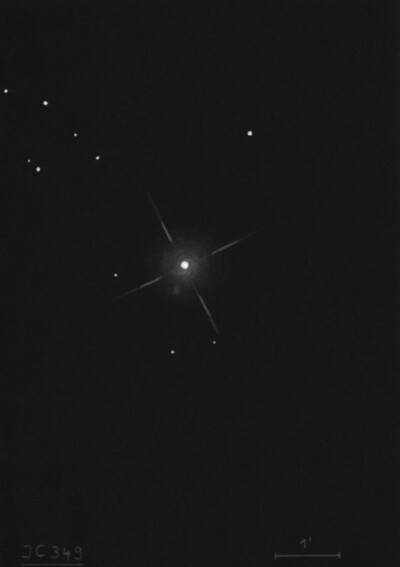Barnard's Merope Nebula
Barnard's Merope Nebula

E.E. Barnard discovered IC 349, a fan-shaped knot of nebulosity just 0.6' SSE of Merope, visually on 14 Nov 1890 using the Lick 36" refractor. It was announced in a discovery note in AN 3018. "On Nov. 14 while examining the cluster, I discovered a new and comparatively bright round cometary nebula close south and following Merope, every precaution was taken to prove that it was not a ghost of Merope by examining the other stars of the group under the same conditions. I have since seen it several times and on Dec. 8th I could see it with some difficulty in the 12-inch by occulting Merope with a wire in the eyepiece. With the great telescope the nebula can be seen fairly well with Merope in the field and is conspicuous when the star is placed just outside the north edge of the field. It is about 30" in diameter, of the 13th mag, gradually brighter in the middle, and very cometary in appearance. It was examined with powers of 300, 520 and 1500, with all of which it was comparatively easy."
900/1200mm - 48" (10/31/13): IC 349 is a reflection knot just 36" SSE of Merope. We used 813x and carefully placed Merope barely outside the north edge of the field. The orientation was easy to judge using two 15th magnitude stars 1.8' S and 1.8' SSW of Merope and the elongated glow fell between the diffraction spikes. Despite the glare from Merope making the observation much more difficult, I was surprised this small reflection nebula was fairly bright and elongated (roughly pointing south from Merope) with a straighter western edge, perhaps 20"x10" in size.
Notes by Steve Gottlieb